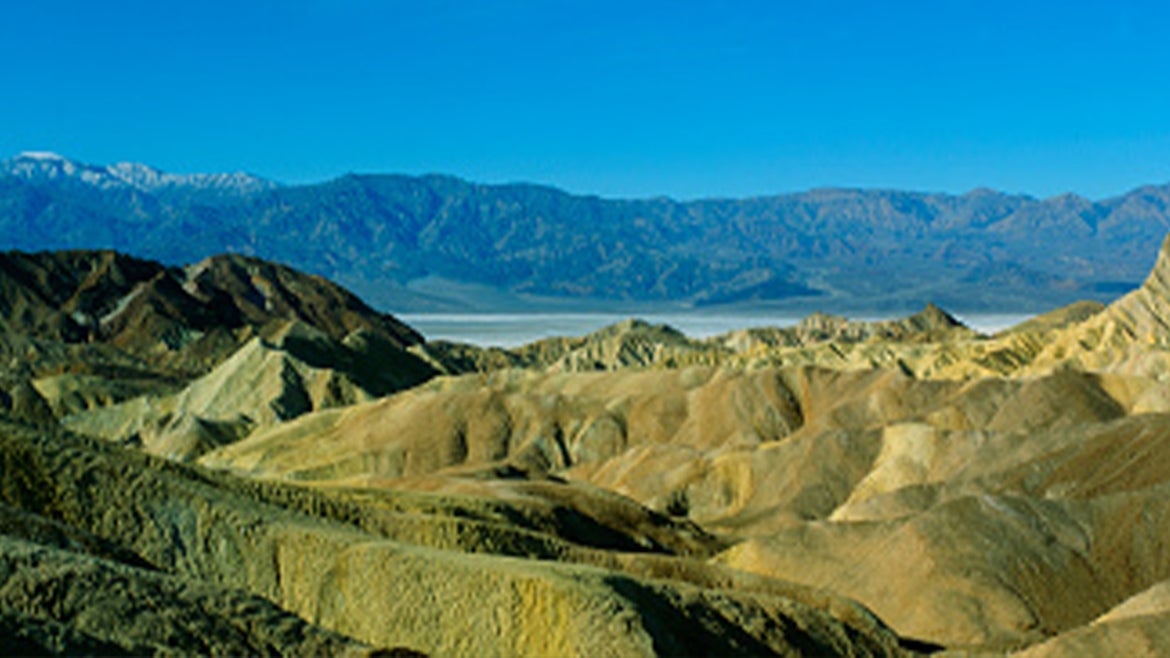This flower, called Perityle inyoensis, sits on 22,500 acres of precious desert land in Conglomerate Mesa. The terrain is described as “unconfined, rugged, and brimming with rich desert life and cultural history.”
What will be the fate of a rare daisy near a gold mine near Death Valley?
For those who would like to know what makes this brilliant yellow flower so unique, here's the story behind it.
This rare flower, called Perityle inyoensi, sits on 22,500 acres of precious desert land in Conglomerate Mesa. The terrain is described as “unconfined, rugged, and brimming with rich desert life and cultural history.”
Despite its beauty and value, the area is being threatened by a large-scale open-pit cyanide gold mine by a Vancouver-based company K2 Gold, Friends for the Inyo said on its site.
“Conglomerate Mesa is too special a place to sacrifice to industrial-scale mining. These activities would permanently destroy important cultural, historic, and geologic values that for so long have meant so much to so many. These resources deserve to be preserved for future generations,” Friends for the Inyo said.
According to Friends for the Inyo, the company took over the Conglomerate Mesa gold exploration project in April 2020. Part of their expanded proposal was to add more miles of new road construction into the Mesa and 30 additional drill sites, totaling 120 drill holes, the site said.
“In the face of this threat, Friends of the Inyo and our partners are seeking permanent protection of this beloved desert gem. Without it, we will continue to fight perennial battles with mining companies who want to destroy this land,” the group said.
The privately-owned land in nearby historic Cerro Gordo Mining District was another area recently sold to investors. The plan is to develop a ghost town into a tourist attraction, according to the Los Angeles Times.
The daisy’s habitat in Conglomerate Mesa and Cerro Gordo is designated as part of the National Conservation Lands system, it remains open for commercial extraction under the 1872 Mining Law, the news outlet reported.
"The petition has prompted a divide among those communities that are struggling along U.S. Highway 395; historically the land has been a legendary mining site, but today it relies on its tourism from Southern California," the Los Angeles Times reported.
And, in this barren area, many of these exotic flowers live. The Perityle inyoensis is a rare species of flowering plant in the aster family known by the common names Inyo rock daisy and Inyo laphamia, according to the California Native Plant Society (Calscape).
Its habitat is dry, rocky mountain slopes, often in limestone, Calscape explained, and is endemic to Inyo County, California, where it is known from just a few occurrences in the southern Inyo Mountains.
Maria Jesus, a conservationist with the non-profit California Botanic Garden, has been trying to protect the land, and save the flowers from extinction.
Earlier this month, Jesus, along with Ileene Anderson, a senior scientist at the Center for Biological Diversity, and the California Native Plant Society, submitted petitions to the California Fish and Game Commission and the U.S. Fish and Wildlife Service on their precious parcel of land, working to make the Inyo rock daisy a threatened or endangered species.
They hope their actions will help prevent K2’s plant. However, it will take time.
State and federal wildlife authorities said they may not take the petition under consideration until August. And, in the interim, K2 has asked for permission to start some preliminary work on the mesa before its exploratory drilling activities, the Times reported.
“These wildflowers may have endured decades of historic mining,” Anderson said, “but they don’t stand a chance against a combination of modern industrial-scale operations and extreme climate shifts.”
Jesus was captivated the first time she saw the yellow flower, discovering it “all by itself on a cliff on a scorching summer day," she said, the Times reported. And, vowed to “do everything in my power to ensure its survival,” the Times reported.






